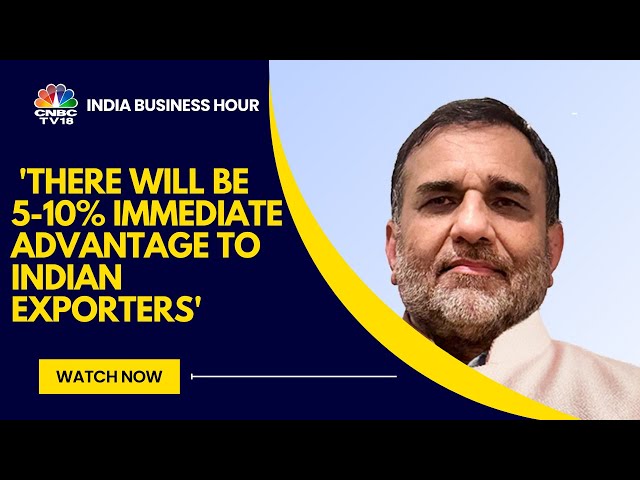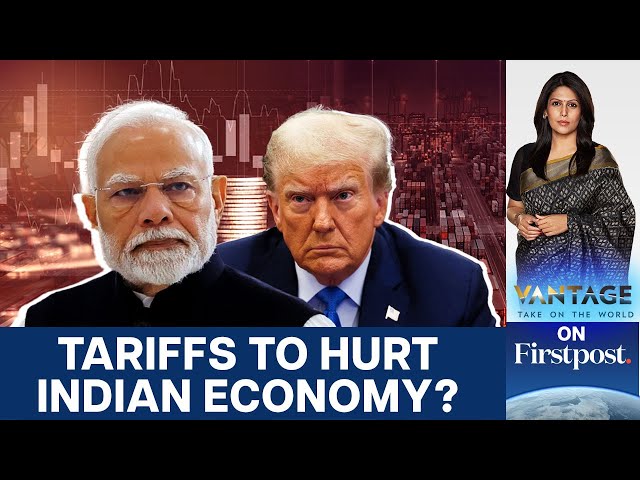Who Really Benefits from the UK-India Trade Deal
Short- and Long-Term Effects

Publish Date: Last Updated: 1st June 2025
Author: nick smith- With the help of GROK3
Introduction
The UK-India Free Trade Agreement (FTA), finalized in May 2025, is heralded as a landmark post-Brexit deal, promising a £4.8 billion GDP boost and £25.5 billion in trade growth by 2040. By eliminating tariffs on 99% of Indian goods and easing skilled worker mobility, the agreement aims to deepen ties with India’s 1.4 billion-strong market. However, beneath the optimistic headlines lies a complex reality. Critics argue the FTA’s social security exemption—waiving 13.8% employer National Insurance Contributions (NICs) for Indian workers—and visa expansions favor corporations while straining UK communities. Rapid migration, amplified by the UK’s 1.9 million Indian diaspora and the escalating India-Pakistan conflict (sparked by India’s missile strikes on May 6–7, 2025), raises fears of overwhelmed services and middle-class job losses. This article examines who truly benefits—corporations, workers, or consumers—and analyzes the deal’s short- and long-term effects on the UK, drawing on historical precedents and current tensions.
Background: The UK-India FTA and Its Context
The FTA, the UK’s most significant post-Brexit trade deal, targets mutual economic growth. Key provisions include:
- Tariff Reductions: 99% of Indian goods (e.g., textiles, footwear) enter the UK tariff-free, while UK exports like whisky (£1 billion projected increase) and cars face phased tariff cuts in India (e.g., whisky tariffs drop to 40% over 10 years).
- Social Security Exemption: Indian workers in the UK are exempt from NICs (~13.8% employer, ~12% employee) for three years, saving firms ~£2,900/worker/year at £30,000 salary, provided workers contribute to India’s social security (e.g., Employees’ Provident Fund).
- Professional Mobility: Streamlined Skilled Worker visas and mutual qualification recognition facilitate Indian professionals’ entry into UK sectors like IT, healthcare, and engineering, with reciprocal access for UK workers in India.
- Digital Trade: Electronic contracts and data flows enable remote work, boosting outsourcing to India’s $20 billion IT export sector.
The deal comes amid global uncertainties, including US tariff threats under President Donald Trump and the India-Pakistan conflict, triggered by a deadly terrorist attack in Kashmir on April 22, 2025, and India’s retaliatory strikes. India’s 7% GDP growth and the UK’s need for Indo-Pacific ties make the FTA strategically vital, but its domestic impacts spark debate.
Historically, UK trade deals have mixed records. The UK-Australia FTA (2022) offered minimal GDP gains (0.08%) while exposing farmers to cheap imports, and globalization’s textile decline (1970s–2000s) cut ~700,000 jobs. Indian IT offshoring in the 2000s depressed UK wages (~5–10%), raising fears the FTA repeats these patterns. The deal’s beneficiaries—corporations, Indian workers, UK consumers, or the middle class—depend on its execution and external pressures like the India-Pakistan conflict.
Short-Term Effects: Migration, Service Strain, and Job Competition
The FTA’s immediate impacts center on rapid migration, strained public services, and intensified job competition, particularly affecting the UK’s middle class.
Rapid Migration and Service Strain
The FTA’s professional mobility provisions expand Skilled Worker visas, enabling Indian professionals (e.g., IT engineers, doctors) to enter the UK more easily. Historical data suggests ~20,000 Indian workers could arrive annually, each bringing an average of 1.5 dependants (spouse + 0–1 child), totaling ~30,000 dependants (15,000 spouses, 15,000 children). Unlike care workers, banned from bringing dependants since March 2024, other skilled workers face no cap, amplifying family migration.
- Education: ~15,000 children require school places, costing ~£112.5 million/year (£7,500/pupil). Urban schools in diaspora hubs like London and Birmingham, already ~10–15% over capacity, face overcrowding and teacher shortages (~40,000 vacancies).
- Healthcare: Workers and dependants (~50,000 people) add ~£125 million/year to NHS costs (£2,500/person), with the £1,035/year healthcare surcharge covering ~41% (£51.75 million), leaving a £73.25 million shortfall. NHS staffing shortages (~100,000 vacancies) and 7 million patient waiting lists worsen delays.
- Housing: ~7,500–10,000 families need 2–3-bedroom homes, tightening the UK’s 4.3 million-home shortage. Urban rents (£1,200–£2,000/month) rise, squeezing middle-class residents in areas like Leicester.
The temporary three-year stays limit long-term strain but offer no guaranteed benefit, as educated children return to India without contributing future taxes, a concern echoed in public debates. Tax contributions (~£200 million/year from income tax, VAT, council tax for 20,000 families) offset some costs, but capacity constraints dominate short-term impacts.
Job Competition and Wage Pressure
The social security exemption and lower Indian wages create a ~40–50% cost advantage per worker (£770,000/year for 50 workers at £30,000 vs. £40,000 UK equivalents), incentivizing firms to hire Indian labor, both on-site and remotely. Remote workers in India (~£11,500/year) save ~70% (£1.4 million/year for 50), with no UK labor oversight, echoing 2000s call center offshoring that cut ~100,000 UK jobs.
Indian workers’ education (1.5 million engineering graduates/year) and English proficiency intensify competition in IT (~150,000 jobs), healthcare (~1.2 million NHS jobs), and engineering. UK workers face ~13–40% effective pay cuts to compete, threatening middle-class livelihoods. Historical IT offshoring by firms like Infosys depressed UK wages by ~5–10%, and X posts criticize the FTA as a “giveaway” to corporations, undercutting local labor.
Tax Revenue Erosion
Lost NICs (~£108 million/year for 20,000 workers) and displaced UK jobs (~£65 million/year for 10,000 jobs at £40,000) erode revenue, limiting service investments. Remote workers pay no UK taxes, amplifying losses, though on-site workers’ income tax and VAT (~£200 million/year) provide partial offsets. Short-term fiscal pressure hits middle-class services like schools and hospitals, fueling public discontent.
Long-Term Effects: Economic Growth, Strategic Ties, and Middle-Class Impacts
Over the long term, the FTA offers economic and strategic benefits but poses risks to the middle class if mismanaged.
Economic Growth
The projected £4.8 billion GDP boost and £25.5 billion trade increase by 2040 create high-skill jobs in whisky (~5,000–10,000 jobs), automotive (e.g., Jaguar Land Rover), and high-tech sectors (e.g., medical devices). India’s 1.4 billion consumers and 7% GDP growth offer UK firms vast markets, strengthening sectors less vulnerable to Indian competition. Consumer benefits from cheap Indian imports (textiles, food) increase middle-class purchasing power, though job losses offset some gains.
Strategic Ties
The FTA positions the UK as a key partner to India, the world’s fifth-largest economy, countering post-Brexit trade isolation (e.g., US tariff risks). Indian investments, like Tata’s £4 billion battery plant, create jobs and tie supply chains to the UK. Cultural ties via the 1.9 million Indian diaspora foster long-term trade, with returning migrants potentially boosting UK exports as India’s middle class grows.
Middle-Class Impacts
Without intervention, middle-class workers face sustained job competition and wage pressure from Indian labor. Historical globalization cut ~700,000 UK textile jobs, and the FTA risks similar losses in low-to-mid-end manufacturing (~100,000 jobs). Upskilling is critical, but past retraining efforts (e.g., post-2000s) were underfunded, leaving workers vulnerable. Service strain may ease as temporary migrants leave, but housing shortages persist, and community tensions (e.g., Indian-Pakistani divides) could linger, as X posts warn.
Proactive policies—retraining, service investments—could shift benefits to the middle class, leveraging FTA revenue to create high-value jobs (e.g., AI, renewables). However, the deal’s asymmetry (India’s immediate tariff-free access vs. UK’s phased gains) risks skewing benefits toward India long-term, echoing the UK-Australia FTA’s limited returns.
Who Benefits? Corporations, Workers, and Consumers
Corporations
Multinationals like Infosys, TCS, and UK tech firms gain most, leveraging the NICs exemption and wage gaps to save ~£770,000–£1.4 million/year for 50 workers. The FTA’s digital trade provisions boost outsourcing, and tariff-free Indian components lower manufacturing costs (e.g., for Jaguar Land Rover). Small and medium enterprises (SMEs) benefit less, lacking resources to navigate complex Rules of Origin, mirroring past trade deals’ corporate bias.
Indian Workers
Indian professionals access higher UK salaries (£25,000–£30,000 vs. £5,000–£10,000 in India) and Western lifestyles, with the diaspora easing integration. However, temporary contracts and potential exploitation (e.g., lower wages, long remote hours) limit gains, especially for remote workers under Indian labor laws.
UK Workers
Middle-class UK workers face job losses and wage cuts (~13–40%) in IT, healthcare, and manufacturing, with textiles (~100,000 jobs) most at risk. High-skill workers in whisky or aerospace benefit, but most face short-term disruption, requiring upskilling to compete long-term.
UK Consumers
Consumers gain from cheaper Indian textiles, footwear, and food, increasing disposable income. However, service strain (e.g., NHS waits, school overcrowding) offsets these benefits for middle-class families reliant on public systems, and job losses reduce purchasing power.
Government and Strategic Interests
The UK government secures a diplomatic win, strengthening Indo-Pacific ties and countering Brexit isolation. Long-term GDP growth supports public finances, but short-term tax erosion and community strain risk political backlash, as seen in Conservative critiques of the NICs exemption.
The India-Pakistan Conflict: A Migration Wildcard
The India-Pakistan conflict, escalated by a Kashmir terrorist attack on April 22, 2025, and India’s missile strikes on May 6–7, 2025, adds uncertainty. India’s Operation Sindoor targeted nine sites in Pakistan, raising fears of nuclear escalation between the two nations (each with ~130–160 warheads). The conflict disrupts India’s economy, with a trade ban cutting $447.7 million in exports and delaying investments, pushing skilled professionals to migrate.
- Migration Spike: A limited conflict may increase Indian migration by 10–20% (~12,000–24,000 workers + 18,000–36,000 dependants/year), while major escalation could trigger a 1971 Bangladesh War-scale influx (~50,000–100,000 workers + 75,000–150,000 dependants). The UK’s diaspora and FTA visas amplify this risk.
- Service Impact: A 24,000-worker spike adds ~18,000 children (£135 million/year) to schools, ~60,000 people (£100 million/year shortfall) to the NHS, and ~9,000 housing units, overwhelming urban hubs.
- Community Tensions: X posts warn of Indian-Pakistani clashes in the UK (1.9 million vs. 1.6 million diaspora), risking unrest in cities like Bradford, especially if migration surges.
While analysts suggest “managed hostility” may limit escalation, the conflict’s uncertainty heightens the FTA’s migration risks, exacerbating short-term strain and complicating long-term benefits.
Recommendations for a Balanced Deal
To mitigate the FTA’s risks and ensure broader benefits, the UK government should:
- Cap Dependants: Limit Skilled Worker dependants to one child, reducing ~7,500 children/year from schools and easing service strain, similar to the care worker ban.
- Shorten NICs Exemption: Reduce the exemption to one year or require 5% NICs, cutting corporate incentives (~£145,000/year less for 50 workers) and protecting UK workers.
- Regulate Remote Work: Mandate UK firms outsourcing to India to meet minimum labor standards (e.g., 40-hour weeks), leveling the playing field.
- Invest in Services: Allocate £500 million from FTA revenue to expand schools (~1,500 places), NHS staff (~1,000), and housing (~10,000 units) in diaspora hubs like London and Birmingham.
- Retraining Fund: Invest £300 million to retrain ~15,000 UK workers for high-skill roles (e.g., AI, renewables), countering job competition.
- Monitor Conflict: Prepare visa controls (e.g., higher salary thresholds) for conflict-driven migration spikes and fund community cohesion programs to prevent Indian-Pakistani tensions.
Conclusion
The UK-India FTA offers significant economic and strategic potential but raises serious concerns about who truly benefits. Corporations reap immediate gains, exploiting the NICs exemption and wage gaps to save ~40–70% per worker, while Indian workers access better opportunities, and consumers enjoy cheaper goods. However, UK middle-class workers face job losses, wage cuts (~13–40%), and strained services (education: £112.5 million/year; healthcare: £73.25 million/year shortfall; housing: ~7,500 units), with rapid migration (~50,000 people/year) amplifying urban pressures. The India-Pakistan conflict risks migration spikes, potentially adding ~18,000–150,000 dependants, and inflaming community tensions, as X posts highlight. Historical trade deals, from textile declines to IT offshoring, warn of middle-class harm without intervention.
Long-term, the FTA’s £4.8 billion GDP boost and India’s market access could benefit all, but only if the government acts. Capping dependants, reforming NICs, and investing in services and retraining can balance short-term pain with long-term gain, ensuring the deal doesn’t repeat past mistakes. Without these, the FTA risks favoring corporations and India over UK communities, leaving the middle class to bear the cost.
Sources:
- BBC News: UK-India FTA, May 2025; India-Pakistan Conflict, May 7, 2025
- GOV.UK: UK-India Free Trade Deal; Skilled Worker Visa – Your Partner and Children
- Striking Women: Post-1947 South Asian Migration
- Education for All in India: Indian Migration Overview, 2023
- Reuters: Pakistan Warns of Indian Military Action, May 1, 2025
- GOV.UK: Monthly Monitoring of Entry Clearance Visa Applications, January 2025
- X Posts: Concerns about migration, NICs exemption, and Indian-Pakistani tensions
- Additional data: UK service costs, migration trends, and IT offshoring from ONS, Home Office, and industry reports.
Latest from YouTube

BREAKING: India launches airstrikes on Pakistan and Pakistan-administered Kashmir | BBC News
YouTube Channel: BBC News

UK and India strike trade deal, but at what cost?
YouTube Channel: Sky News

India Manufacturing Sector Will See Gains Very Very Quickly From The UK-FTA Deal: Anup Wadhawan
YouTube Channel: CNBC-TV18

India's GDP Growth Forecast Downgraded Amid Tariff Threats | Vantage with Palki Sharma | N18G
YouTube Channel: Firstpost
More Great AI co-created Articles
AI Questions and Answers section for Who Really Benefits from the UK-India Trade Deal
Welcome to a new feature where you can interact with our AI called Jeannie. You can ask her anything relating to this article. If this feature is available, you should see a small genie lamp above this text. Click on the lamp to start a chat or view the following questions that Jeannie has answered relating to Who Really Benefits from the UK-India Trade Deal.
Be the first to ask our Jeannie AI a question about this article
Look for the gold latern at the bottom right of your screen and click on it to enable Jeannie AI Chat.









